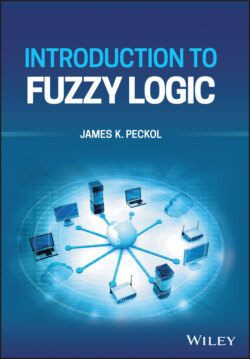Читать книгу Introduction to Fuzzy Logic - James K. Peckol - Страница 30
I.3 Starting to Think Fuzzy – Fuzzy Logic Q&A
ОглавлениеWe'll open this book by introducing fuzzy logic. Along our path, we use, design, and develop tools, techniques, and knowledge from just about every other discipline in electrical engineering and computing science.
OK, let's start. Other than an interesting name, exactly what is fuzzy logic? Many people have heard something about fuzzy logic but are not quite sure what it is, what it means, or what's fuzzy about it. Let's try to answer those questions and several of the other more common ones.
Despite its amusing and seemingly contradictory name, fuzzy logic is not a logic that is fuzzy. Exactly the opposite is true. It is a way of capturing the vagueness and imprecision that are so common in our everyday languages and thinking. Capturing and representing such vagueness and imprecision in terms that a computer or learning system can understand and work with becomes the challenge.
Fuzzy logic can represent statements that are completely true or false, and it can also represent those that are partially true and/or partially false. Classical crisp logic lives in a black‐and‐white, “yes” and “no” world. Fuzzy logic admits shades of gray. Such an ability to represent degrees of truth using what are called hedges and linguistic variables makes fuzzy logic very powerful for representing vague or imprecise ideas.
